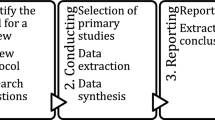Abstract
SoC system designers commonly employ SystemC based Transaction level modeling (TLM) for its early software development usage and its analysis capabilities. TLM helps in realizing a SoC using virtual prototyping by integration of SoC components at different abstraction levels. The TLM 2 standard introduces interoperability rules for the models that may have been developed independently. However, neither SystemC compiler nor TLM library supports checking of such rules and manually debugging interoperability errors in such models could be a major problem. This provides motivation for developing automatic compliance checking techniques which can detect and report such errors. As the models are refined to incorporate detailed intercommunication protocols among the system components, the need for compliance checking extends to these protocols as well. In this paper, we present an efficient UML based compliance checking technique for TLM 2 models which supports static, dynamic and protocol-specific rule checking.












Similar content being viewed by others
Notes
A standard transaction object.
References
Cai L, Gajski D (2003) Transaction level modeling: an overview. In: 1st IEEE/ACM/IFIP international conference on hardware/software codesign and system synthesis, CODES+ISSS 2003, CA, USA
Accellera Systems Initiative (2011) IEEE 1666-2011 language reference manual
TLM-2.0 Base Protocol Checker (2012) Doulos. http://www.doulos.com/knowhow/systemc/TLM2/base_protocol_checker
Object Management Group (OMG) (2012) SysML v1.2 Specification
Object Management Group (OMG) (2012) UML Profile for MARTE specification
Object Management Group (OMG) (2012) UML Profile for SoC v1.1 Specification
Riccobene E et al (2009) SystemC/C-based model-driven design for embedded systems. ACM Trans Embedded Comput Syst 8(4). doi:10.1145/1550987.1550993
Mischkalla F, He D, Müller W (2010) Closing the gap between UML-based modeling, simulation and synthesis of combined HW/SW systems. In: Proc design, automation and test in Europe, DATE 2010. IEEE Press, New York, pp 1201–1206
Habibi A, Tahar S (2006) Design and verification of SystemC transaction-level models. IEEE Trans Very Large Scale Integr (VLSI) Syst 14(1):57–68
Jain V, Kumar A, Panda P (2011) A SysML profile for development and early validation of TLM 2.0 models. In: 7th int conf modelling foundations and applications (ECMFA’2011). Springer, Berlin, pp 299–311
Object Management Group (OMG) (2012) UML 2.2 OCL specification
Jain V, Kumar A, Panda P (2011) A UML based approach for dynamic validation of TLM 2 models. In: Proc 14th int forum on specification and design languages (FDL’11). IEEE Press, New York, pp 1–8
ARM Ltd (2012) AMBA Protocol Specification. http://www.arm.com
Open Core Protocol International Partnership (OCP-IP) (2012) A SystemC OCP transaction level communication channel. www.ocpip.org
Object Management Group (OMG) (2012) UML 2.0 superstructure and infrastructure specification
The MagicDraw tool (2012) No Magic Inc. http://www.nomagic.com
Carbon Design Systems (2012) TLM-2 for AMBA protocol solution. http://portal.carbondesignsystems.com
Bawadekji M, Große D, Drechsler R (2011) TLM protocol compliance checking at the electronic system level. In: 14th int symp on desi and diag of elec circ & syst (DDECS’11), pp 435–440
Moy M, Maraninchi F, Maillet-Contoz L (2005) LusSy: an open tool for the analysis of systems-on-a-chip at the transaction level. Des Autom Embed Syst 10(2–3):73–104
Karlsson D, Eles P, Peng Z (2006) Formal verification of SystemC designs using a Petri-net based representation. In: Proc DATE’06
Ferro L, Pierre L (2009) ISIS: Runtime verification of TLM platforms. In: Proc forum on specification design languages (FDL’09)
A Digital Picture Frame Solution (2011) Texas Instruments Inc. http://focus.ti.com/docs/solution/folders/print/471.html
Niemann B, Haubelt C (2006) Assertion-based verification of transaction level models. In: Proc ITG/GI/GMM workshop, February 2006
Ecker W, Esen V, Hull M (2007) Implementation of a transaction level assertion framework in SystemC. In: Proc design automation test in Europe, pp 894–899
Actis Design (2012) AccurateC—static code analysis for SystemC
KaSCPar—Karlsruher SystemC Parser Suite (2012) http://www.greensocs.com/projects/KaSCPar
Pinapa—A SystemC front-end (2012) http://greensocs.sourceforge.net/pinapa
Zhu Q, Oishi R, Hasegawa T, Nakata T (2004) System-on-chip validation using UML and CWL. In: Proc 2nd IEEE/ACM/IFIP international conference on hardware/software codesign and system synthesis (CODES+ISSS), pp 92–97
Author information
Authors and Affiliations
Corresponding author
Rights and permissions
About this article
Cite this article
Jain, V., Kumar, A. & Panda, P. Exploiting UML based validation for compliance checking of TLM 2 based models. Des Autom Embed Syst 16, 93–113 (2012). https://doi.org/10.1007/s10617-012-9089-7
Received:
Accepted:
Published:
Issue Date:
DOI: https://doi.org/10.1007/s10617-012-9089-7




